Although we have crisscrossed the Durmitor region many times, we have never explored the narrow mountain road from Šavnik to Plužine that runs above the Komarnica Canyon.
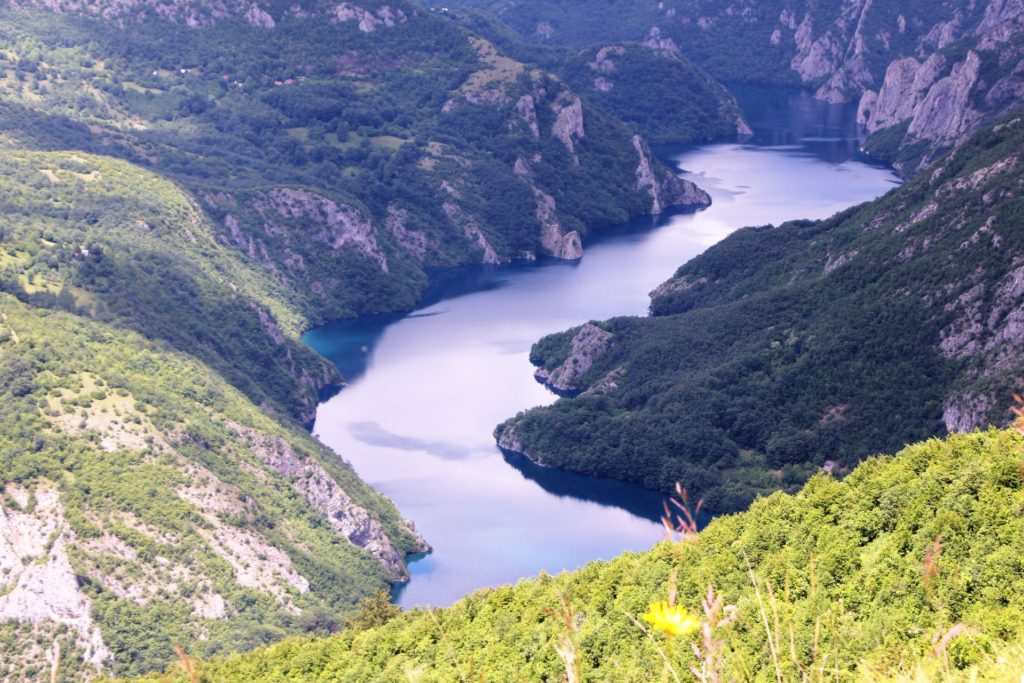 Some stretches of this route are forest and dirt roads, which makes this trip particularly suitable for all-terrain vehicles, but the tour can also be done by robust SUVs and even by the old Golf 2-vehicles that are mostly used by the local inhabitants.
Some stretches of this route are forest and dirt roads, which makes this trip particularly suitable for all-terrain vehicles, but the tour can also be done by robust SUVs and even by the old Golf 2-vehicles that are mostly used by the local inhabitants.
Why is this route so interesting? First of all, it offers you breathtaking views, as it runs high above the 1000 meter deep Komarnica Canyon, which – in my opinion – does not lag behind the Tara Canyon. You will pass through authentic settlements, untouched karst areas, flower-covered pastures and dense forests. A real discovery trip!
The Route
 The enclosed map shows the route in blue (paved road) and red lines (dirt/forest roads).
The enclosed map shows the route in blue (paved road) and red lines (dirt/forest roads).
If you want to make a round trip without visiting Plužine: instead of keeping left at Boričje, turn right at the junction and follow the dirt road uphill (3 km, pink line) until you join the ‘Ring around Durmitor‘ (green line). Turn right and follow this road, over the Sedlo-pass, until you reach the main road Žabljak-Šavnik.
The tour starts in Šavnik (distance: Podgorica-Šavnik around 100 km; Šavnik – Plužine around 55 km). Follow the main road towards Žabljak and turn left after 3 km to Pošćenje. Pass the lake and turn left uphill. Pass the bridge over the Komarnica, above the entrance to the Nevidio Canyon. You will soon reach the long-shaped village of Duži and after a while you will reach the village of Dubrovsko. This is where the asphalt ends.
A 7 km long dirt road (which is obviously rarely used) runs further to the next village: Bezuje. Turn right and take the paved road uphill to Borkovići. Then continue to the village of Boričje (2 km dirt road – paved road – 1.5 km dirt road – paved road). Turn left at the junction. The road descends along green slopes and through picturesque tunnels until a three-fold tunnel on the main road to Šćepan Polje. Pass the bridge to Plužine.
 And a last tip: visit the medieval Piva Monastery (7 km south of Plužine), which was moved during the eighties of the last century from the Piva river source some 2 km to a higher location. Its careful deconstruction stone by stone and its transfer to the new location, as well as the reconstruction of medieval frescoes, lasted over a decade.
And a last tip: visit the medieval Piva Monastery (7 km south of Plužine), which was moved during the eighties of the last century from the Piva river source some 2 km to a higher location. Its careful deconstruction stone by stone and its transfer to the new location, as well as the reconstruction of medieval frescoes, lasted over a decade.
The Komarnica Canyon
The Komarnica river, together with the Nevidio Canyon, is part of a 120 km long river system that consists of five rivers: Tušina, Bukovica, Bijela, Komarnica and Piva. That is the reason why Piva is also called ‘the river with five names’.
The Nevidio Canyon is a mystery of nature and a very popular place for extreme sports, i.e. canyoning. No wonder, as the name Nevidio already suggests (in translation: ‘never seen’), this canyon – 2 km long and at some places only 25 cm wide – is known as the last explored canyon of Europe. Only in 1965 a group of mountaineers with diving equipment passed through the canyon for the first time. It took them two days. Nowadays, adventure lovers can visit the canyon with guided tours that are organized by several travel agencies.
 The Komarnica river flows along a deep and winding gorge between the mountains of Treskavac and Vojnik. In an almost uninhabited area, it enters the high Piva plateau, where it turns to the north. Almost the entire stream is flooded by the reservoir of Piva Lake.
The Komarnica river flows along a deep and winding gorge between the mountains of Treskavac and Vojnik. In an almost uninhabited area, it enters the high Piva plateau, where it turns to the north. Almost the entire stream is flooded by the reservoir of Piva Lake.
The Tour
We started the tour in Šavnik (840 m above sea level) and followed the main road to Žabljak for 3 km. Then we turned left to the romantic village of Pošćenje. This place is well-known as starting point for canyoning tours to the Nevidio Canyon.
We passed the village, admired the quiet Pošćensko Lake and turned left uphill where we passed the bridge above the entrance of the Nevidio Canyon. From above, it really looked scary!
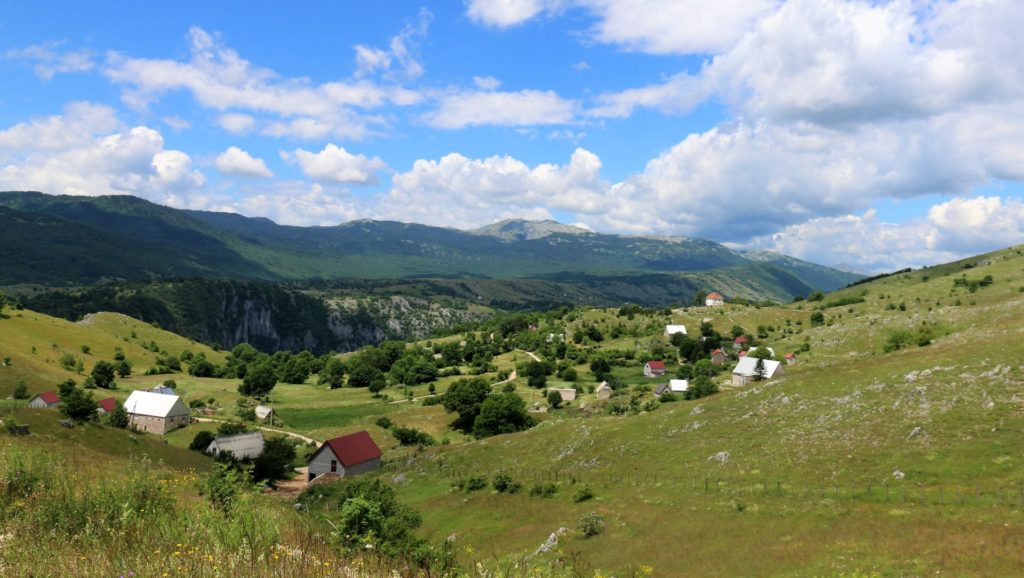 But also the narrow road over Žuta Greda and further to the village of Duži, high above the gorge, was quite frightening… Driving slowly, and hoping that we would not encounter any vehicles from the opposite direction, we reached Duži (‘duž’ means ‘along’ or ‘longer’) with its interesting church. From time to time we enjoyed the breathtaking views of the canyon with its emerald-green water, deep below us.
But also the narrow road over Žuta Greda and further to the village of Duži, high above the gorge, was quite frightening… Driving slowly, and hoping that we would not encounter any vehicles from the opposite direction, we reached Duži (‘duž’ means ‘along’ or ‘longer’) with its interesting church. From time to time we enjoyed the breathtaking views of the canyon with its emerald-green water, deep below us.
The long-shaped village of Duži has two graveyards: one without a church, and the other one around the St. Sava’s church, built in 1837, which differs from all other village churches in the surroundings (see photo).
 We continued our trip through the forests, high above the canyon, until we reached the village of Dubrovsko, where the asphalt road stopped.
We continued our trip through the forests, high above the canyon, until we reached the village of Dubrovsko, where the asphalt road stopped.
The narrow dirt road that led us to Bezuje, a beautiful village on the edge of the canyon, was obviously rarely used, but offered magnificent views and untouched natural beauties.
A buzzard flew up from a tree in front of our car and took a rest on a branch nearby, where we could admire him. It was a wonderful moment of silence and a view in that what really matters: pure nature.
We ascended to an altitude of 1600 m. During a short stop in Bezuje, where we saw a herd of sheep resting in the shade of a huge tree, we met an old farmer, who told us a lot about the area.
Can you imagine that the name of Bezuje comes from the Albanian word ‘uje’, which means ‘water’? So, Bezuje would mean ‘without water’. However, on the internet I found another explanation: Bez-uje would mean Bez-ujaka, i.e. ‘without uncle’. What is true? I leave it to you to decide.
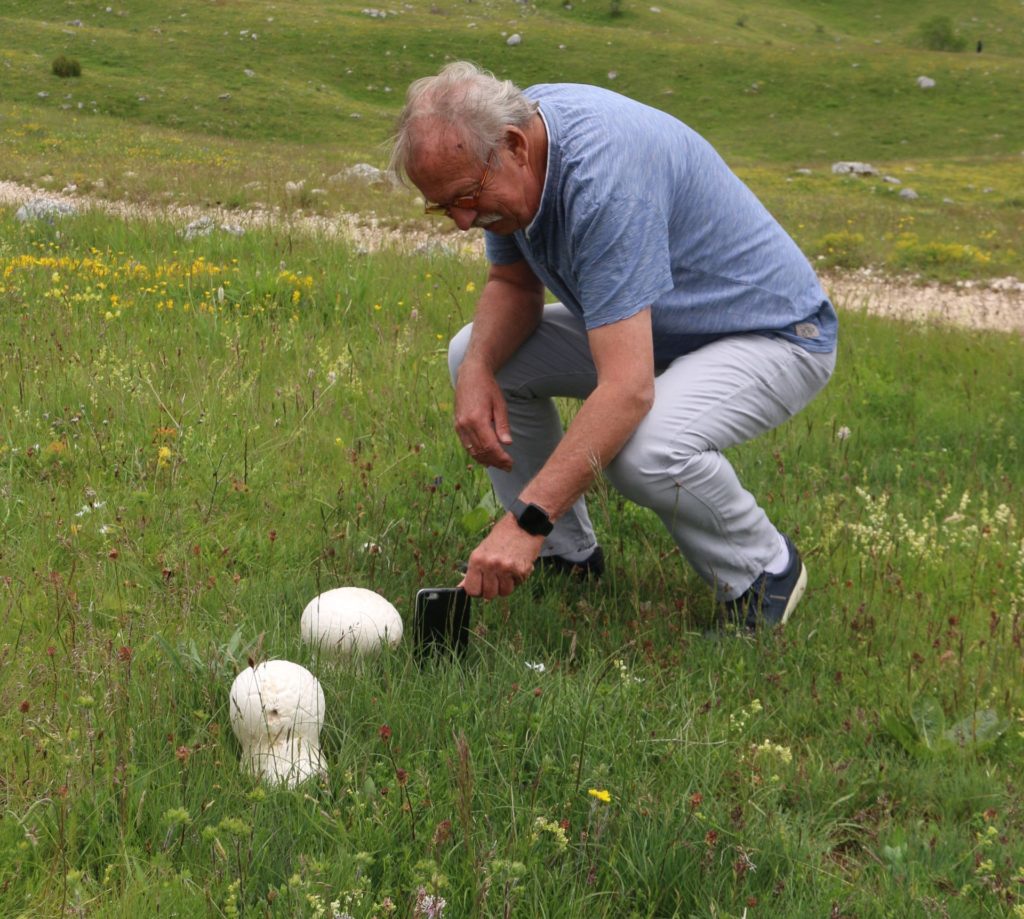 The old man also told us the sad story about the nearby village of Doli, where more than 500 civilians were killed in 1943. This story is known as the ‘Bloody Fairytale of Piva’ and it is really heartbreaking. During WWII, the SS Division „Prinz Eugen“ terrorized the local population of Piva and committed many atrocities. They were responsible for the execution of 522 innocent civilians in Doli, of which more than 100 were children. Even a newborn baby was killed without mercy. The bodies were thrown into pits and the complete killing action ended within one hour. What a horrible story!
The old man also told us the sad story about the nearby village of Doli, where more than 500 civilians were killed in 1943. This story is known as the ‘Bloody Fairytale of Piva’ and it is really heartbreaking. During WWII, the SS Division „Prinz Eugen“ terrorized the local population of Piva and committed many atrocities. They were responsible for the execution of 522 innocent civilians in Doli, of which more than 100 were children. Even a newborn baby was killed without mercy. The bodies were thrown into pits and the complete killing action ended within one hour. What a horrible story!
It was clear that cattle breeding is the main activity in these mountain villages, most of which are situated at an altitude of around 1300 meters above sea level. The oldest settlements were already mentioned in the Middles Ages in written documents and oral epics. They have demonstrated, again and again that it is possible to survive in this harsh area, merged with the natural environment.
From Bezuje we turned right and took the narrow asphalt road that led to a small mountain plateau around Borkovići. The pastures were covered by flower carpets and we saw big, pure white puffballs (Calvatia). These mushrooms are edible and quite tasty, when they are still immature.
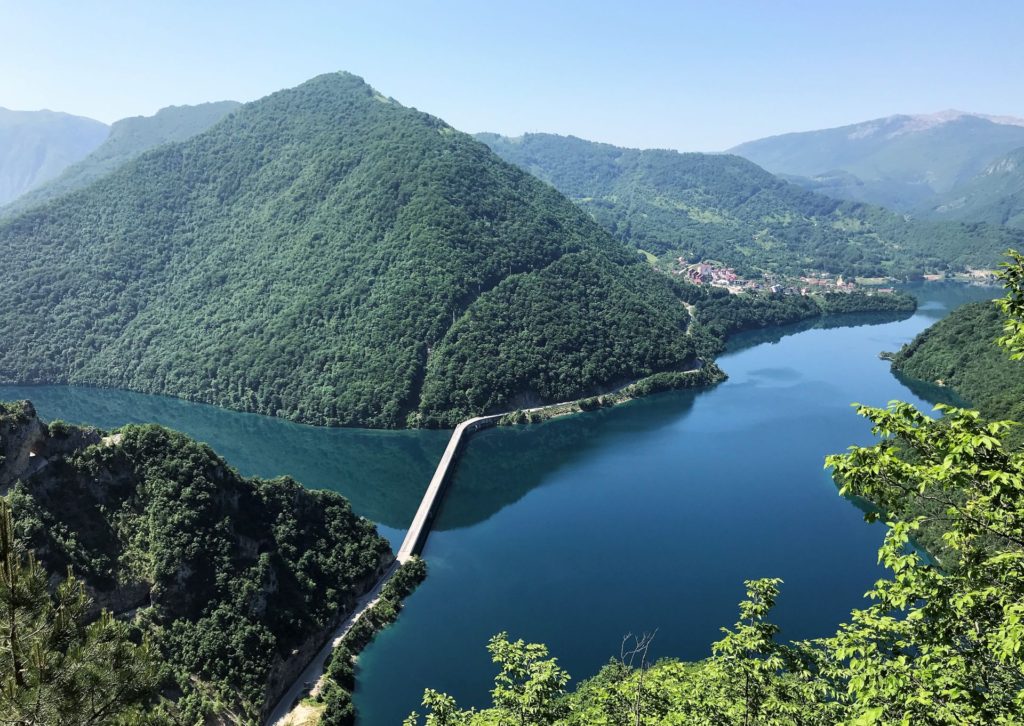 Some parts of the road between Borkovići and Boričje were macadam, other ones were paved (see map). Once in Boričje, we turned left and descended through the dense forests above the Piva Canyon and several tunnels carved into the karst rocks, until we arrived at an interesting tunnel with three entrances – directly on the main road, where we passed the bridge and arrived in Plužine.
Some parts of the road between Borkovići and Boričje were macadam, other ones were paved (see map). Once in Boričje, we turned left and descended through the dense forests above the Piva Canyon and several tunnels carved into the karst rocks, until we arrived at an interesting tunnel with three entrances – directly on the main road, where we passed the bridge and arrived in Plužine.
Plužine (population 1500) has an interesting history, as the old town of Plužine no longer exists. It is now at the bottom of Piva Lake, as it was flooded in 1975 when it was decided to build a hydroelectric power plant on the lake and a large dam. A completely new town was built in the seventies.
After a cup of coffee at Zvono, a famous restaurant and guesthouse in Plužine, we returned to Nikšić and Podgorica in the late afternoon.
Conclusion
We are always looking for new experiences and this tour through the Piva area is certainly a highlight. The wild gorge and lonely plateaus, the harsh but impressive landscape, the extraordinary views and the untouched nature make this trip unforgettable. If you have an adventurous spirit and a robust car: take the roads less travelled, as there is so much so see in Montenegro!
References:
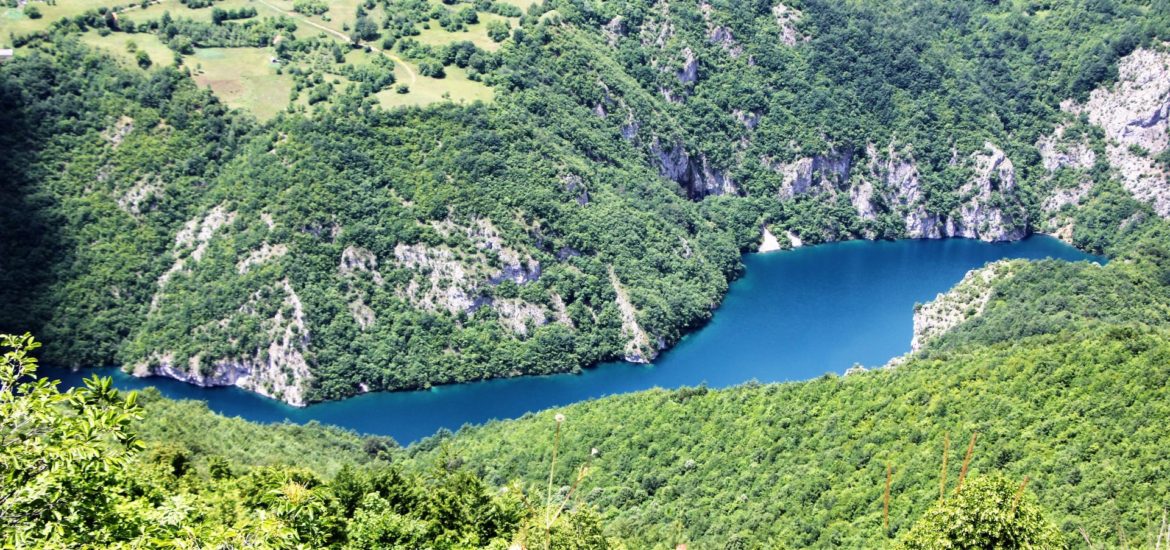
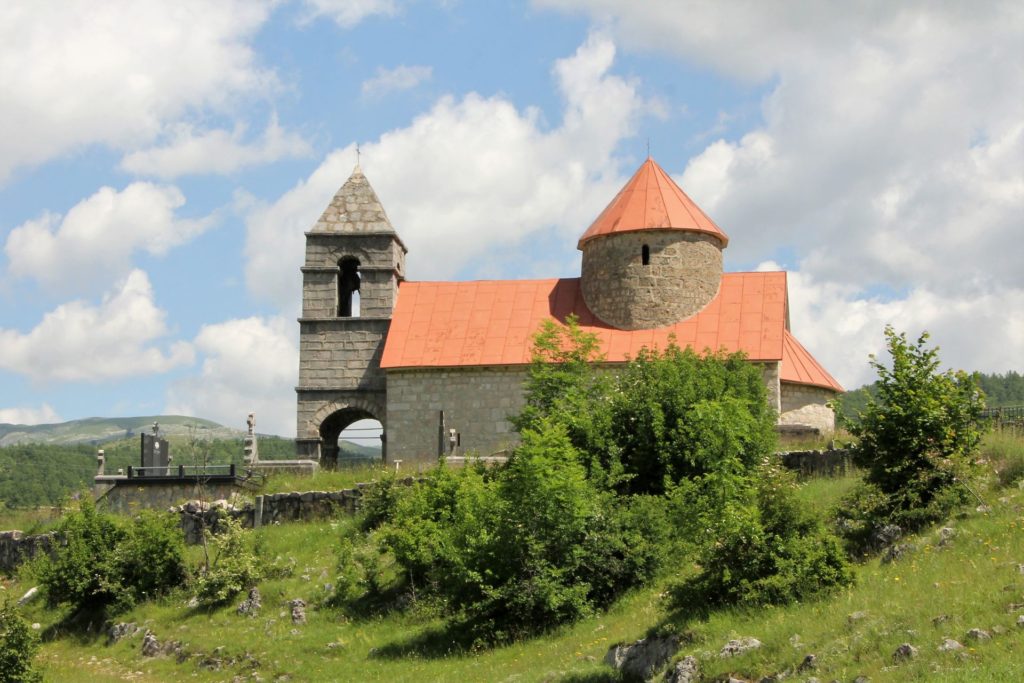


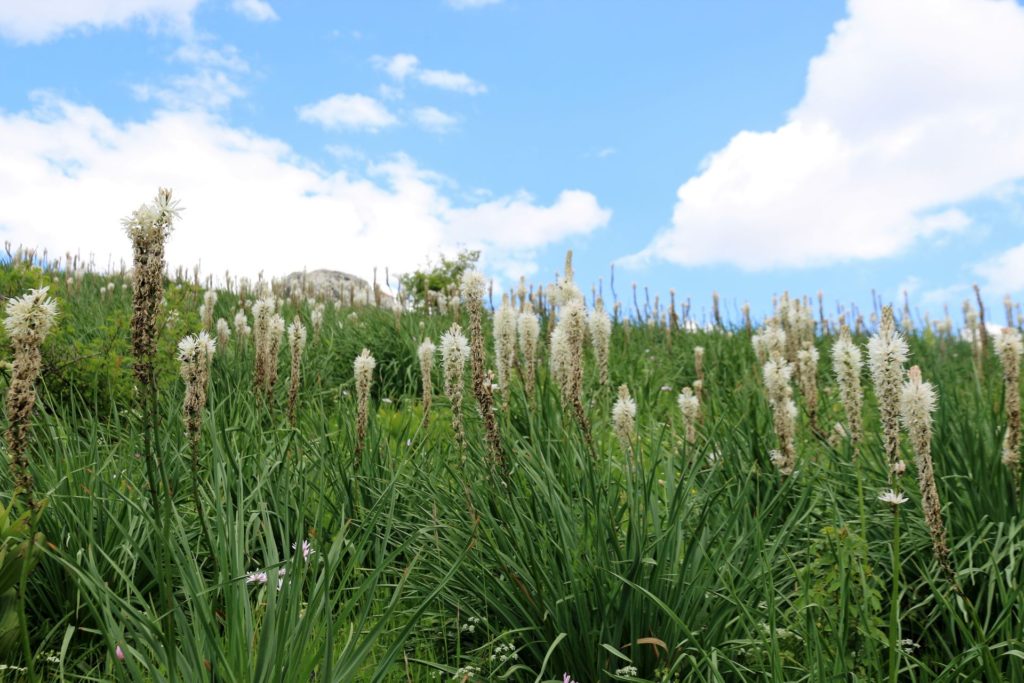
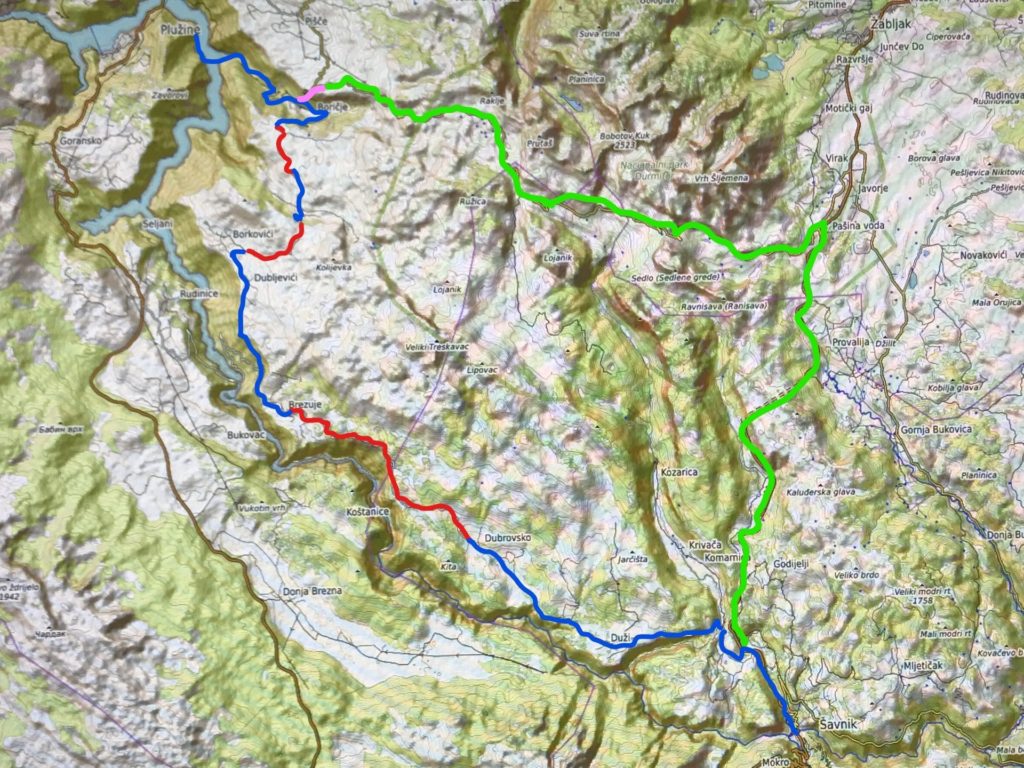
If I could, I would start doing the tour immediately. Beautiful.
Woow prachtig ik ben verliefd op Montenegro.
Thank you so much for sharing this. Indeed it seems Montenegro has an undending store of treasures to discover.
[…] is still a rather unknown area for us. We started our discovery trips in June of this year with an off-road tour along the Komarnica river. This time we intended to explore the plateau around Crkvičko […]
4 years later you have an asphalt road from Dubrovsko to Bezuje
Thank you for the information!